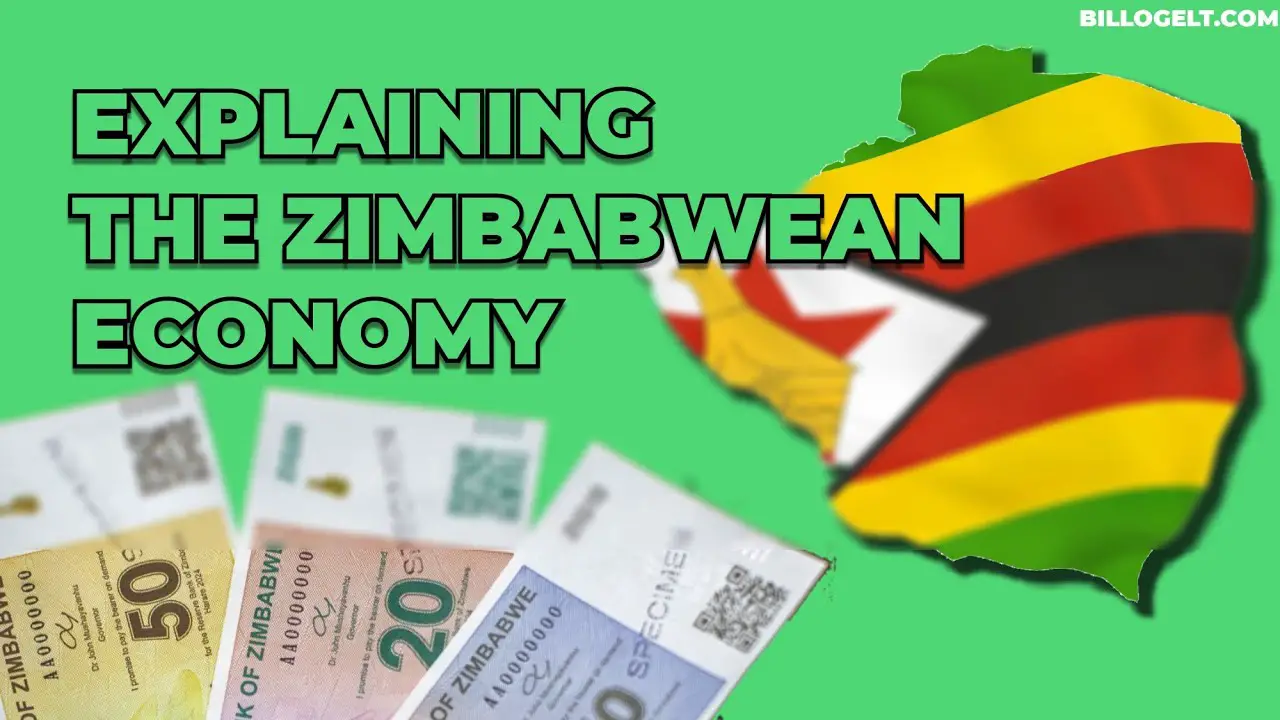Zimbabwe Introduces New Currency: What Happens Now?
Zimbabwe has long been known as the country with a severe case of inflation, as its currency has inflated many times, with the country at one point printing a $100 trillion note. However, for the past decade, from 2014 to 2024, the country has been using something called bond notes, as well as adopting foreign currencies such as the South African Rand and United States Dollar. The bond notes were officially abandoned around 2018/2019 with the introduction of a new currency, the RTGS/Zimbabwean Dollar, which has been in use since then.
The RTGS was primarily used electronically through POS and other popular services in the country, such as EcoCash and OneMoney. For a long time, this currency has been used to price goods and services. However, since Zimbabwe has been operating under a multi-currency system, businesses and individuals began basing prices of goods and services in USD or ZAR (South African Rand). Prices are cross rated if someone wants to purchase a product or service priced in a different currency.
For example, if you wanted to buy a pizza for $10 (USD) and the seller accepts all forms of payment and currencies, you could make a purchase in either USD, Rands, or RTGS. Since 1 USD is currently (at the time of writing) equal to R18.59, if you wanted the pizza, you would have to pay R18.59 multiplied by 10, which is equal to R185.90. This is convenient if you are making the purchase in foreign currency, but when the RTGS came into the mix, it could get a bit complicated because of inflation. Get ready for this.
1 USD at the time of writing is equal to 24,000 RTGS. So, if you wanted to buy that $10 pizza, you would pay the equivalent of 240,000 RTGS, which is an insane amount of money. I'm sure that makes you wonder, do Zimbabweans walk around carrying hundreds of thousands of cash on them to make these outrageous payments? Fortunately, no. As I mentioned earlier, the RTGS is mainly used electronically and through other payment systems and services.
Zimbabwe’s Electronic Payment System
Zimbabwe has multiple services commonly used for making purchases in RTGS, with two particularly common ones. The first is called ZimSwitch, which functions similarly to VISA and MasterCard systems but operates exclusively within Zimbabwe. However, it is not limited to RTGS transactions, as it can also facilitate USD transactions. The other service is EcoCash, a mobile payments system comparable to Apple Pay, Google Pay, or PayPal. This service is provided by Econet Wireless, one of Zimbabwe's largest companies, owned by the billionaire entrepreneur Strive Masiyiwa.
EcoCash, as you might have guessed, only works for Econet customers. If you have an Econet SIM card, you can register for EcoCash and start using the service to make transactions in RTGS. Your phone or SIM card number serves as your account number, and the service, like ZimSwitch, is not limited to RTGS transactions, as you can also make USD transactions with it. Besides these two, there is also OneMoney, a service provided by the government-owned company NetOne, which is a rival to Econet Wireless.
So, the answer is no, Zimbabweans do not walk around carrying bags of money, and there are no unrealistic currency denominations like before. The last one they ever printed was the $100 bond note, and they never went further. However, inflation did continue to exist, which is why the government has decided to introduce the Zimbabwean Gold currency.
In case you are wondering how Zimbabweans make online transactions for subscriptions like Netflix, Spotify, etc., just like every other country, Zimbabwe has access to VISA and MasterCard platforms, which allow them to conduct online payments.
What Does the New Currency Do?
The new Zimbabwean currency is known as Zimbabwean Gold (ZiG), as it is backed by the gold reserves of the Reserve Bank of Zimbabwe (RBZ), the country's national bank. Not only does Zimbabwe get a new currency, but they also get a new Bank Governor, John Mushayavanhu, who takes over from John Mangudya, whose term ends on the 30th of April 2024.
Unlike previous currencies that Zimbabwe created, ZiG's value will be determined by the amount of gold the country has in its reserves. So, for example, if the nation has $1000 worth of gold, they will print no more than $1000 of paper currency. If they print, let's say, $1001 worth of gold, they would have exceeded the actual amount, which would mean that the extra $1 was printed out of thin air, causing inflation. This approach aims to maintain the currency's value and prevent inflation by ensuring that the amount of currency in circulation is directly linked to the country's gold reserves.
The United States of America used to print its currency based on its gold reserves until 1971 when they abandoned that system. The United States Dollar is now a fiat currency, meaning its value is dependent on the trust and confidence of the people using it. However, this can lead to problems, as is evident in the USA's current situation. The country is currently in $34 trillion of debt compared to 2020 when it had $20 trillion of debt. This means that the United States' debt has increased by $14 trillion in the last four years. This is a concerning situation for the United States, as it accrues millions of dollars in debt within seconds.
See USA’s live debt count here: US Debt Clock
Conclusion
Zimbabwe's government hopes that this new currency will resolve the country's inflation problem and bring economic stability for its citizens, but only time will tell. While there is optimism, there are also uncertainties, especially considering Zimbabwe's history of economic challenges, compounded by sanctions imposed over the past two decades. This complex situation leaves the outcome uncertain. Nonetheless, understanding the current situation in Zimbabwe and the introduction of the Zimbabwean Gold currency sheds light on the path the country is taking.



